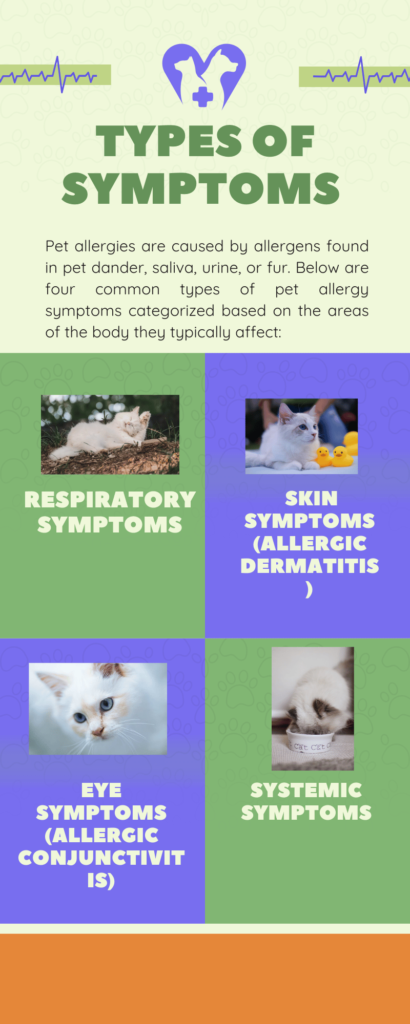How can I enhance cat allergy awareness? Practical Tips and Strategies
Cat allergies are more common than many people realize, yet they’re often misunderstood. For individuals who suffer from allergies or live with allergic family members, understanding the causes, management strategies, and preventative measures is crucial. Enhancing awareness about cat allergies can help sufferers and promote better relationships between people and their feline companions. If you’re passionate about spreading knowledge about cat allergies or want to help others navigate this issue, there are several ways to enhance awareness effectively. Let’s dive into some practical strategies to educate and inform others about cat allergies.
Understanding Cat Allergies: What Everyone Needs to Know

Before diving into methods for raising awareness, it’s essential to understand the basics of cat allergies. The more you know, the better you can educate others.
3 Causes of Cat Allergic?
Cat allergies are primarily caused by a protein called Fel d 1, which is found in a cat’s:
- Saliva: Cats groom themselves frequently, spreading their saliva on their fur and skin.
- Skin (dander): Dander comprises tiny flakes of skin that carry allergens.
- Urine: Litter boxes can also be a source of allergens.
When these allergens become airborne, they can trigger reactions in sensitive individuals. Symptoms include sneezing, itchy eyes, skin rashes, and respiratory issues.
Are Certain Cats Less Allergenic?
As discussed earlier, no cat is entirely hypoallergenic. However, some breeds, such as Siberians and Balinese cats, are known to produce lower levels of Fel d 1, making them more tolerable for allergy sufferers.
How to Enhance Awareness About Cat Allergy

1. Respiratory Symptoms
- Caused by inhalation of pet allergens like dander or fur.
- Symptoms include:
- Sneezing.
- Runny or stuffy nose (allergic rhinitis).
- Nasal congestion.
- Shortness of breath or wheezing.
- Coughing.
- In severe cases, it may trigger asthma symptoms or worsen pre-existing asthma.
2. Skin Symptoms (Allergic Dermatitis)
- Occurs due to direct contact with pet saliva, fur, or dander.
- Symptoms include:
- Redness, itching, or hives (raised bumps) on the skin.
- Eczema-like rashes in areas of contact.
- Irritation or swelling, especially after touching the pet.
3. Eye Symptoms (Allergic Conjunctivitis)
- Develops when allergens come into contact with the eyes.
- Symptoms include:
- Red, itchy, or watery eyes.
- Swollen eyelids.
- Burning sensation in the eyes.
- Sensitivity to light.
4. Systemic Symptoms
- A less common but more severe reaction that can occur if the allergy is significant.
- Symptoms include:
- Fatigue or feeling generally unwell.
- Severe itching or swelling throughout the body.
- Rarely, anaphylaxis (a life-threatening allergic reaction).
Spreading awareness about cat allergies involves educating others, offering practical advice, and encouraging understanding. Here are some actionable ways to make a difference:
1. Share Accurate Information Through Blogs and Social Media
In today’s digital age, social media and blogs are powerful tools for spreading awareness about cat allergies. By sharing engaging and informative content, you can reach a wide audience.
Ideas for Blog and Social Media Content:
- Write about common misconceptions about cat allergies, like the myth of hypoallergenic cats.
- Share tips for managing allergies while living with cats.
- Create infographics or videos explaining allergens and how they affect people.
- Highlight real-life stories from people who successfully manage cat allergies.
For example:
- Post a quick tip on Instagram: “Did you know that allergens aren’t caused by cat fur, but by proteins in their saliva and dander? #CatAllergies #PetFacts”
- Write a blog titled “5 Myths About Cat Allergies You Need to Stop Believing!”
2. Host Educational Workshops or Pet Events
Organizing workshops or participating in pet-related events can help spread awareness on a local level. These events provide an opportunity for face-to-face interactions and personalized education.
Topics to Cover in Workshops:
- What causes cat allergies, and how do they work?
- How to reduce allergens in your home.
- The truth about “hypoallergenic” cat breeds.
- Tips for allergy sufferers who want to adopt a cat.
Consider collaborating with veterinarians, allergists, or animal shelters to provide expert insights.
3. Collaborate With Veterinary Clinics and Shelters
Veterinary clinics and animal shelters are often the first places people visit when considering a pet. By working with these organizations, you can help educate potential cat owners about allergies.
Ideas for Collaboration:
- Provide informational brochures or posters about cat allergies for waiting areas.
- Partner with shelters to hold allergy-friendly adoption days where people can learn about hypoallergenic breeds or allergy management.
- Offer free or discounted consultations with allergists for potential cat adopters.
This approach helps bridge the gap between education and action, ensuring people understand what they’re getting into before bringing a cat home.

4. Encourage Research and Scientific Awareness
Promoting research into cat allergies is another effective way to enhance awareness. Many people are unaware of ongoing scientific efforts to develop solutions, such as vaccines or treatments for cat allergies.
How to Support Research:
- Share news articles or studies about advancements in allergy treatments.
- Donate to or promote organizations funding cat allergy research.
- Advocate for more discussions within the medical and scientific communities about pet allergies.
For example, researchers are exploring ways to genetically modify cats to produce less Fel d 1 or develop medications that block the protein from triggering allergic reactions. Sharing this kind of information can inspire hope and curiosity.
5. Provide Practical Tips for Allergy Management
One of the most impactful ways to raise awareness is by sharing practical advice that helps people manage their allergies. Many individuals with cat allergies assume they can never own a cat, but with the right strategies, it’s often possible.
Tips to Share:
- Grooming: Regularly brushing your cat can help reduce loose fur and dander.
- Cleaning: Vacuum carpets and furniture with a HEPA filter and wash bedding frequently.
- Air Purifiers: Invest in an air purifier to reduce airborne allergens.
- Medication: Recommend consulting with an allergist for antihistamines or allergy shots.
- Boundaries: Create cat-free zones in the home, such as bedrooms.
You empower people to make informed decisions about living with cats despite allergies by providing actionable steps.
6. Use Real-Life Examples to Make the Issue Relatable
Storytelling is one of the most effective ways to raise awareness. Sharing real-life examples of people who manage cat allergies can make the issue more relatable and engaging.
Example Story:
Meet Sarah, a lifelong cat lover who discovered she was allergic to cats after adopting her first Ragdoll. Instead of giving up her beloved pet, Sarah took proactive steps to manage her allergies—installing air purifiers, grooming her cat regularly, and working with an allergist. Today, Sarah is thriving with her furry friend by her side. Stories like Sarah’s can inspire others to find solutions rather than feel discouraged.
7. Advocate for Allergy Testing Before Adoption
One often overlooked aspect of cat allergy awareness is the importance of allergy testing. Many adopt cats without realizing they have an allergy, leading to heartbreak when they can’t keep the pet.
Suggestions for Advocacy:
- Promote allergy testing as part of the adoption process.
- Encourage shelters and breeders to recommend short trial periods for adopters to assess potential allergic reactions.
- Share information about “allergy exposure visits,” where potential adopters can spend time with cats in a controlled environment before committing.
These steps can help prevent unnecessary pet returns and promote responsible pet ownership.
Why Enhancing Cat Allergy Awareness Matters
Raising awareness about cat allergies is about more than just educating people—it’s about fostering empathy, understanding, and informed decision-making. Many cats are returned to shelters yearly due to allergy-related issues, and you can help reduce these numbers by spreading awareness. Additionally, people with allergies often feel isolated or frustrated, believing they can’t enjoy the companionship of a cat. By sharing knowledge and practical solutions, you can show them that living harmoniously with a cat even with allergies is possible.
Conclusion: Making a Difference in Cat Allergy Awareness
Enhancing cat allergy awareness requires education, empathy, and actionable advice. Whether you’re sharing tips on social media, collaborating with veterinarians, or advocating for research, every effort counts. By helping others understand the causes and management of cat allergies, you’re not only supporting allergy sufferers but also promoting better care for cats. Together, we can create a world where more people can experience the joy of pet ownership—without the sneezes!
Home
1. What causes cat allergies?
Cat allergies are mainly triggered by a protein called Fel d 1, found in cat saliva, skin, and dander. When cats groom themselves, this protein spreads to their fur and the environment.
2. What are the common symptoms of a cat allergy?
Symptoms include sneezing, runny or stuffy nose, itchy or watery eyes, coughing, wheezing, skin rashes, and asthma flare-ups in sensitive individuals.
3. Are some cat breeds more hypoallergenic than others?
While no cat is completely hypoallergenic, breeds like the Siberian, Balinese, Russian Blue, and Bengal tend to produce lower levels of Fel d 1, making them better for allergy sufferers.
4. How can I reduce cat allergens in my home?
Regularly grooming your cat, using HEPA air purifiers, vacuuming frequently, washing bedding, and keeping cats out of bedrooms can help minimize allergens. Hypoallergenic cat wipes can also reduce dander.
5. Can allergy sufferers still own a cat?
Yes! Many allergy sufferers successfully live with cats by managing exposure, using medication (antihistamines, allergy shots), and choosing low-allergen breeds. Consulting an allergist can help develop a plan.
Final Thought
Cat allergies can be challenging, but with the right strategies, many people can still enjoy the companionship of a feline friend. Awareness, proper cleaning habits, and medical support can make living with a cat more comfortable for allergy sufferers. Whether you’re considering adopting a cat or managing symptoms, understanding cat allergies is key to a happy and healthy coexistence.
